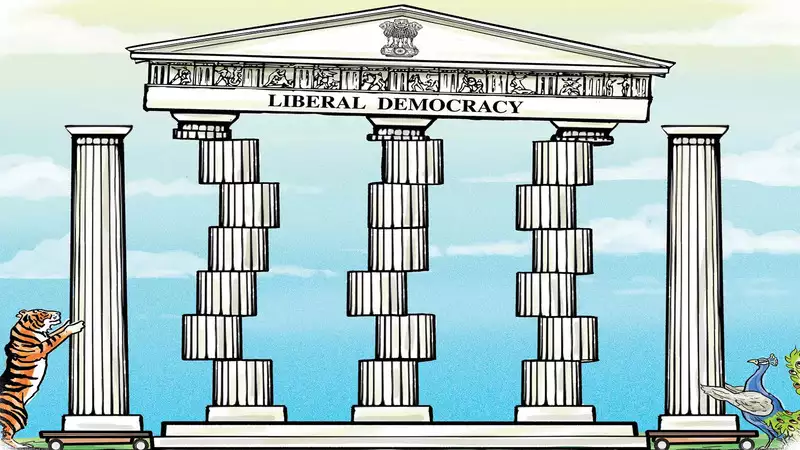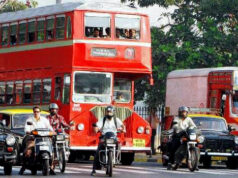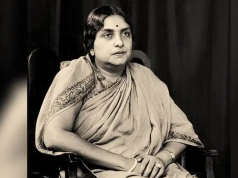The constituent assembly took 156 weeks to draft India’s constitution. The long process and series of debates to arrive at shared principles among assembly members reveal their preference for a liberal society. While these members weren’t elected, they were chosen to represent a diversity of views and many among them had established great credibility through their contribution in taking back freedom and gaining autonomy from British rule.
The remarkable and celebrated part of the constitution, Part III on Fundamental Rights, was borrowed from the ideas of another constituent assembly in 1787. This was the assembly that conceived the US Constitution. They too had just achieved autonomy from British rule and were keen to set the foundation of a nation on the values of individual freedom. Despite these commonalities, how the two societies panned out after their founding moments is as different as night from day. The success of the American constitution, economist Dwight Lee points out, was “derived from the fact that it was the product of intense and widespread public concern for individual liberty”. This concern is largely absent in India.
In 1991, India carried out its most liberal set of reforms since independence. They increased economic freedom and welcomed free enterprise like never before. But the nation at large was indifferent to them. Ashok Desai, chronicler of these times, reported four years after the reforms that any cause for celebration was absent. These reforms were brought in by stealth. This is a telling sign and a deep reflection on India’s public indifference towards the values of freedom. Even the reformers themselves shied away from taking any credit. Reforms, it seemed, may have just fallen out of the sky, just like India’s constitution.
To know why this is a cause for concern, it’s worth turning back to Dwight Lee. His remarkable essay, Liberty and Individual Responsibility, points out:
“There is no way of shifting to a constitution the responsibility for protecting individual liberty against the abuse of government power. Liberty will not long survive the absence of effective constitutional limits on government, but constitutional limits on government will not long remain effective in the absence of public approval of those limits”.
Our Constitution has failed to limit government and has been preyed upon by several interest groups over the years. As of June 2024, the Indian Constitution has gone through 106 amendments. That’s an average of roughly two amendments every year. Most of these amendments are pushed for by interest groups to increase the scope of government, decreasing individual freedom as a result. A document meant to safeguard and protect has changed forms to deliver and expand government power, instead. Part IV of India’s Constitution sets it completely apart from its American counterpart. It contains Directive Principles of State Policy. These are ideas that the state “should” pursue. Part III and Part IV of our Constitution are not compatible with each other. Part IV has triumphed over Part III repeatedly.
Another scholar, Pratap Bhanu Mehta in his excellent essay the Burden of Democracy, builds an important characterisation of India’s democracy that goes on to show that our transition post independence differed. Acknowledging what is missing, can become the start of knowing what is needed. An excerpt from his essay summarises this important view of our society:
“Representative government came to be characterised as simply the outcome of a negotiation between India’s elites on the one hand, and colonial powers on the other. Democracy, on this view, was not the object of ideological passion, it was not born of a deep sense of conviction widely shared, but it was simply the contingent outcome of the conflicts amongst India’s different elites, or an unintended by-product of the British having produced too many lawyers adept in the idioms of modern politics. There was no grand design in Indian democracy, and hence nothing to memorialise in the way the American and French revolutions did their democratic transitions.”
Democracy, unfortunately, is not a flywheel. There is no virtuous cycle that will flow once it starts. The value of freedom is always at play in every interaction of an individual. Freedom from foreign rule and economic liberalisation were just two instances from our past, when our society made major strides. But it’s important that we be at the frontier, pushing for liberal ideas, constantly.
It’s worth emphasising, freedom at its core is a negative construct. It holds that the actions of individuals should be limited only to prevent harm to other individuals, and no more. Any act that restricts freedom, must be questioned. Reminding the government or any other institution for that matter, the importance of restraint is everyone’s responsibility and something that cannot be outsourced. This culture is still missing, and needs to be pushed for. Without it our constitution alone will have very little to offer. In the words of Dwight Lee, “there is no avoiding the fact that liberty will perish if the exercise of liberty is not tempered by an ethic of individual responsibility”.
References:
- Dwight R. Lee, “Liberty and Individual Responsibility”, April 1, 1987, Foundation for Economic Education. (link)
- Ashok Desai, “Liberalisation and Liberalism in India”, 1995, Liberal Times. (link)
Pratap Bhanu Mehta, “Burden of Democracy”, 2017, Penguin India. (link)
Post Disclaimer
The opinions expressed in this essay are those of the authors. They do not purport to reflect the opinions or views of CCS.






